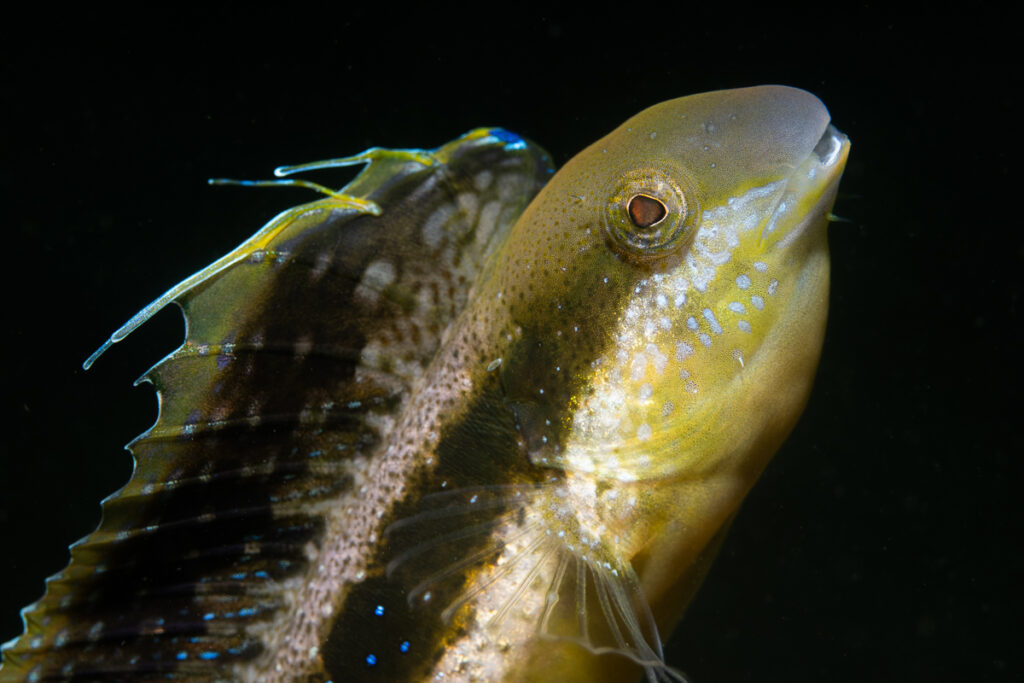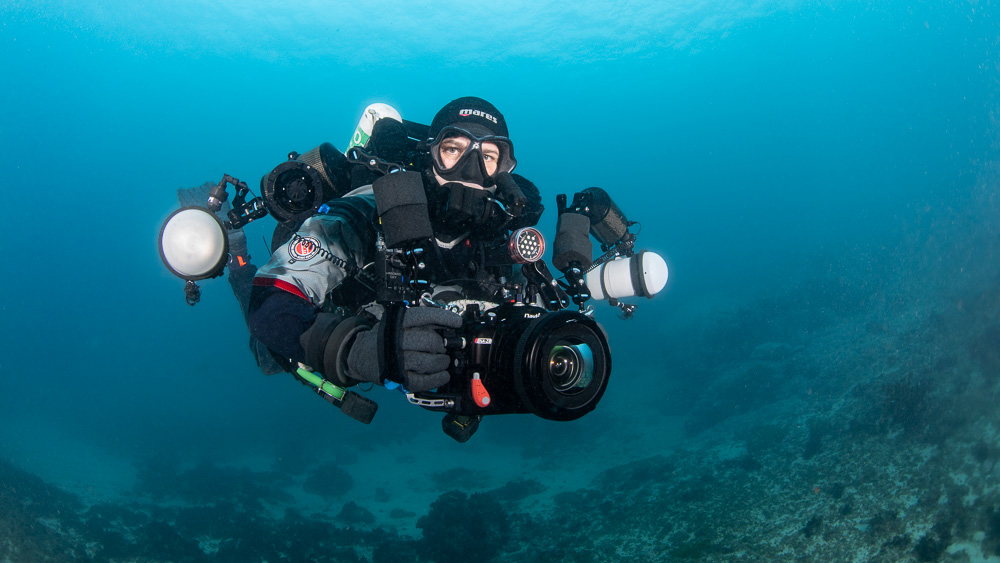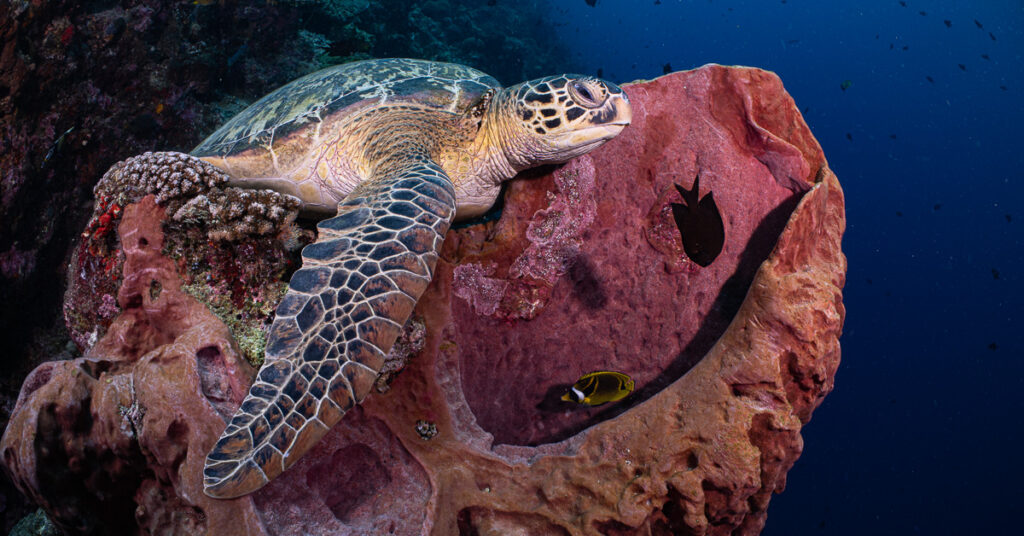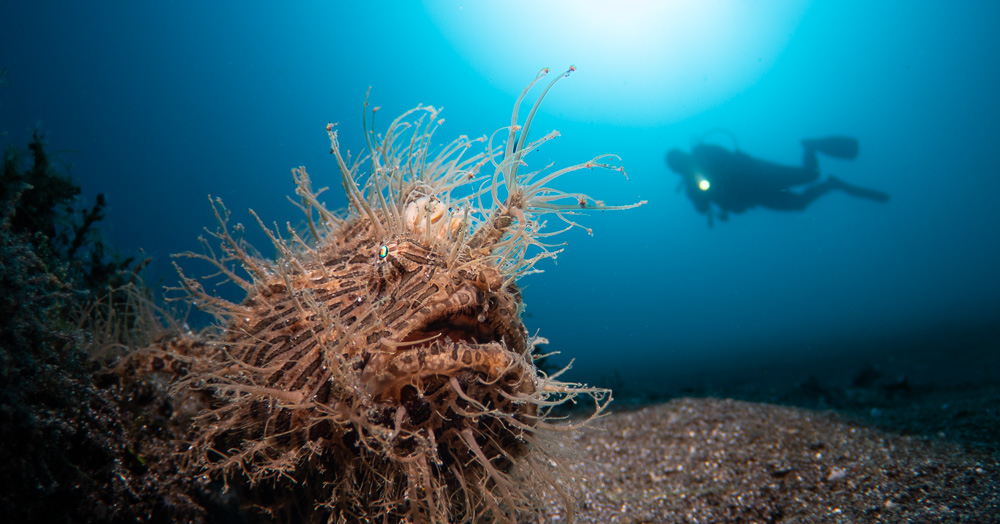Nikon Z9 review part 6: Conclusion

Before trying the Z9, I had worked my way through 5 different Nikon DSLRs underwater photography setups. Each of them brought incremental updates, while building on familiar grounds.
In comparison, the Z9 experience was different in a number of ways, and I experienced a bit of a learning curve. It took me a few dives to fully embrace the EVF paradigm and make the most of it, and a couple of dives to get used to the new autofocus and its animal recognition capabilities.
When I upgraded from the D7000 to the D500, this was all pros and no cons, in favor of the newer camera body. When comparing the Z9 to the long-established D850/D500, there are both pros & cons for an upgrade.
Pros & Cons
Pros (vs DSLRs)
- More “sticky” autofocus: allowing to track subjects and re-compose while you approach, even in low ambient light.
- Animal recognition: saves time by automatically selecting the subject. It works with some (but not all) underwater critters, and is less sensitive in low light/low visibility.
- Ability to quickly review photos in the EVF, without having to move away from the subject.
- Mission control : all the important settings are visible in the EVF.
- See in the dark: the EVF amplifies the scene and helps you see and compose, when the ambient light gets low.
- Seemless DX/FX switch: in DX mode, the full size of the EVF is used, making the shooting experience as comfortable as in FX mode.
- Higher configurability: customize the 4 fn controls and more, all available at your finger tips (in the Nauticam NA-Z9 housing)
Cons (vs DSLRs)
- Size and weight
- Autofocus performance under a red light
- Lower EVF contrast, under a red light
- Back-focus with the Nauticam EMWL wet conversion lens. UPDATE October 2023: visit this post for my review of the newly-released solution to that problem.

Brown sabre-tooth blenny, (Nikon Z9, Nikon Z 105mm f/2.8, one Retra Flash Pro and Retra LSD snoot, f/20, 1/200s, ISO 400)
Final words
Before I started using the Z9 underwater, I had asked Members of The Underwater Club what they were curious to know about the Z9, and I answered all their questions in this review, except one.
That last question was whether the Z9 could take shots impossible to capture on a D850 or D500 DSLRs.
I reflected on this for a while, and couldn’t think of any underwater subject matter that is too hard for the best Nikon DSLRs to capture. As a rebreather diver, I routinely do 3 to 4 hours long dives, staying down for as long as necessary, whenever I find a great subject. I have time so I am able to wait minutes for the subject to come out of its den again, I don’t mind backing off to review photos, even if it will take another long, cautious approach to return to shooting position.
But here is the thing: when I jump on a commercial boat my bottom time becomes limited like everyone else’s. When I dive with other photographers, we’re taking turns and I can’t spend ages waiting on the subject. Also, some opportunities are short-lived by nature: it takes only seconds for two pipefish to exchange their eggs, there is no second chance.
When time is of the essence, the Z9 shines by letting me work quicker (ref. the first 4 “pros” of my list) and simply has a higher keepers rate than the best DSLRs, when it comes to critical focus (I measured 70% vs 44%, when working in challenging conditions).
Finally, if you’re finding the Z9 appealing but are unsure about the size and weight, consider the newly released Nikon Z8, which shares most of the Z9’s impressive features, in a smaller package. Personally, I look forward to seeing how it compares, for underwater photography.
About the author
Nicolas Remy (@nicolaslenaremy) is an Australia-based pro shooter and founder of online underwater photography school The Underwater Club. His images have been widely published in print and digital media, and have won over 35 international photo awards.
Z9 review index:
- Part 1: Prelude and Introduction
- Part 2: Autofocus performance
- Part 3: Viewfinder experience
- Part 4: Battery life, Burst shooting, Max Synchro Speed and Image quality
- Part 5: The Nauticam NA-Z9 housing
- Part 6: Conclusion (this post)






Comments